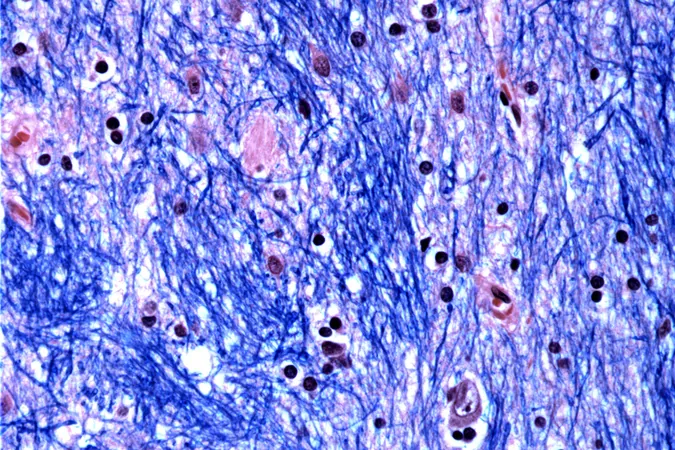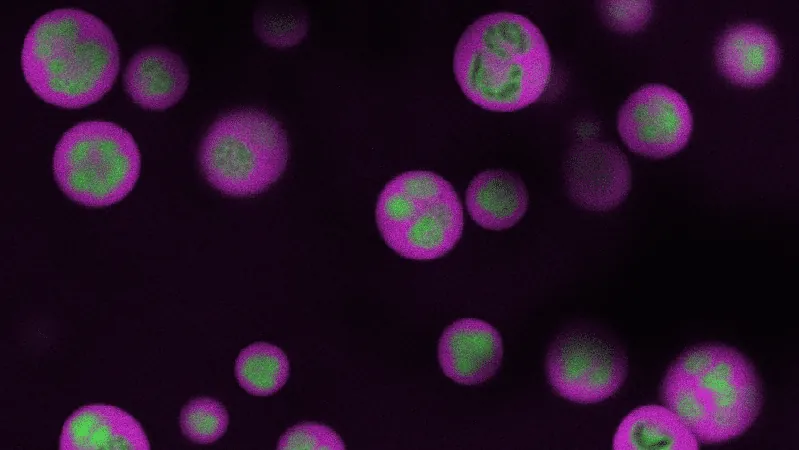
Groundbreaking Insight Reveals What Triggers Huntington's Disease—A Game Changer in Neuroscience!
2025-01-19
Author: Jacob
Groundbreaking Insight Reveals What Triggers Huntington's Disease—A Game Changer in Neuroscience!
A recent scientific breakthrough is offering a clearer understanding of the triggers behind Huntington's disease, an inherited neurological disorder that begins in the prime of life, leading to the deterioration of nerve cells in critical areas of the brain and ultimately resulting in death.
While the genetic mutation associated with Huntington's has been recognized for years, the longstanding mystery has been why individuals carrying this mutation often do not display symptoms until their later years. New research unveils a shocking reality: the mutation remains dormant and harmless for decades before it unexpectedly escalates, resulting in the production of toxic proteins that ravage neural cells.
Dr. Mark Mehler, director of the Institute for Brain Disorders and Neural Regeneration at the Albert Einstein College of Medicine, praised the study as 'landmark,' deeming it a significant milestone in addressing persistent questions in the field.
Symptoms of Huntington's can manifest between the ages of 30 and 50, including involuntary movements, balance issues, personality changes, and cognitive decline. The indicators worsen over the span of 10 to 25 years, leading to severe impairments in motor skills and mental faculties.
Conducted by a team from the Broad Institute of MIT and Harvard, McLean Hospital, and Harvard Medical School, this pivotal research analyzed brain tissue samples from 53 individuals diagnosed with Huntington's and compared them to samples from 50 healthy individuals, combing through half a million cells in their investigation.
At the core of their research was the identification of a specific mutation characterized by the repetition of a three-letter DNA sequence—CAG—where healthy individuals possess between 15 to 35 repeats, while those afflicted with the disease have at least 40. Alarmingly, it appears these CAG repeats gradually lengthen over time, accelerating dramatically once reaching around 80 repeats, ultimately culminating in cell death once they exceed approximately 150 repeats.
Steve McCarroll, a senior author on the research, noted, 'The findings were astonishing, even to us,' as their results were detailed on Thursday in the scientific journal Cell.
Additionally, the study's findings suggest that the repeat expansions occur slowly during the first 20 years of life, but rapidly increase thereafter. Sabina Berretta, another senior researcher, highlighted a critical link: 'The greater the number of repeats, the earlier the disease onset.'
The research serves as a foundation for future exploration, paving the way toward potential treatments aimed at delaying or even preventing this devastating condition that currently impacts roughly 41,000 Americans. Presently, treatments focus on managing symptoms, as experimental drugs targeting the mutated protein have often faltered in clinical trials.
Perplexingly, researchers now theorize that the lack of toxic proteins in the cells, due to the sporadic nature of the mutation, could be a significant factor in these drug failures. Consequently, inhibiting the expansion of DNA repeats could provide a more effective strategy against the disease.
While uncertain whether these approaches will stave off Huntington's, McCarroll reports an optimistic trend: 'Many companies are either initiating or expanding their research programs aimed at addressing this issue.'
This newfound understanding of Huntington's disease is set to reshape the narrative around the condition, potentially holding the keys to groundbreaking therapeutic strategies that could alter the lives of countless individuals and families affected by this hereditary disorder. Keep a close watch as more developments emerge on this critical health frontier!









 Brasil (PT)
Brasil (PT)
 Canada (EN)
Canada (EN)
 Chile (ES)
Chile (ES)
 Česko (CS)
Česko (CS)
 대한민국 (KO)
대한민국 (KO)
 España (ES)
España (ES)
 France (FR)
France (FR)
 Hong Kong (EN)
Hong Kong (EN)
 Italia (IT)
Italia (IT)
 日本 (JA)
日本 (JA)
 Magyarország (HU)
Magyarország (HU)
 Norge (NO)
Norge (NO)
 Polska (PL)
Polska (PL)
 Schweiz (DE)
Schweiz (DE)
 Singapore (EN)
Singapore (EN)
 Sverige (SV)
Sverige (SV)
 Suomi (FI)
Suomi (FI)
 Türkiye (TR)
Türkiye (TR)
 الإمارات العربية المتحدة (AR)
الإمارات العربية المتحدة (AR)